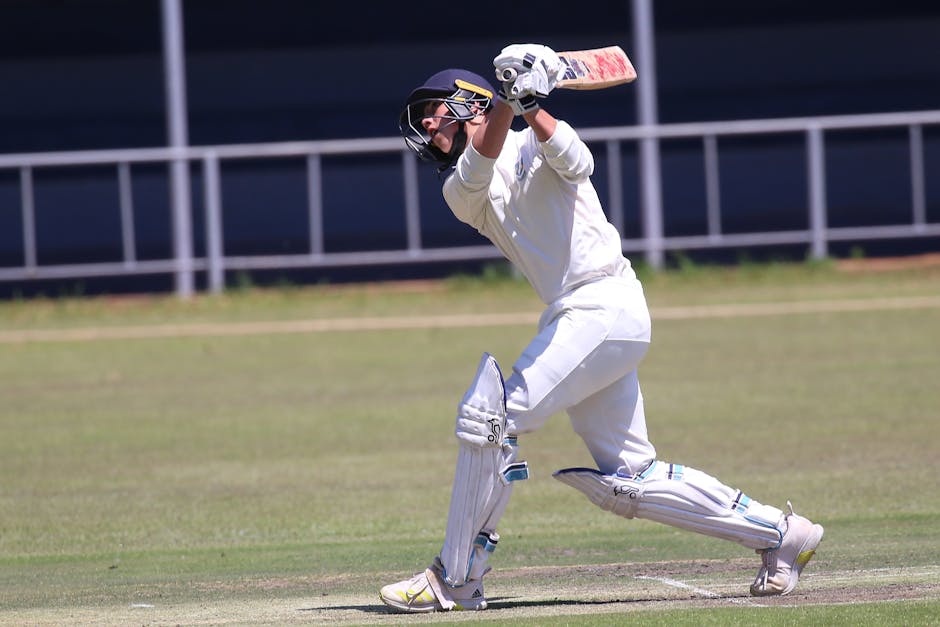Understanding the Basics of Cricket Betting
Cricket betting offers an intriguing way to engage with the sport. To maximize success, it’s crucial to grasp the fundamentals.
Types of Cricket Matches
Understanding different cricket formats helps in making informed bets. The three major formats are Test matches, One Day Internationals (ODIs), and Twenty20 (T20).
- Test Matches: These games are the longest format, lasting up to five days. Betting options include predicting the match winner and the highest run-scorer.
- One Day Internationals (ODIs): These matches conclude in a single day with 50 overs per side. Popular bets encompass match outcomes, top wicket-taker, and most runs.
- Twenty20 (T20): This shortest format completes within roughly three hours. Bet types typically involve the highest first partnership and total runs in specific overs.
Key Factors Influencing Cricket Bets
Several factors can sway the outcome of cricket bets. Being aware of these can enhance betting accuracy.
- Pitch Conditions: The state of the pitch significantly affects play. For instance, a dry pitch may favor spinners, impacting bowler and batsman performance.
- Weather: Weather conditions like rain or cloud cover can influence the game. Rain can shorten matches, altering strategies and potential results.
- Team Form and Composition: The current form and lineup of teams are critical. Injuries, recent performance, and player stats provide insights into possible outcomes.
- Head-to-Head Records: Historical performance between teams offers context. Analyzing past encounters can indicate tendencies and potential outcomes.
Understanding these basics equips bettors to make more strategic choices, enhancing their experience and likelihood of success in cricket betting.
Exploring Different Types of Cricket Bets
Cricket offers various betting options, each providing unique opportunities and challenges. Understanding these bets can enhance your betting experience and success rate.
Match Betting
Match betting is the most straightforward type of cricket bet. You bet on the outcome of a match, predicting whether Team A or Team B wins.
In limited-overs formats like:
- ODIs
- T20s
this bet can also include predicting if the match ends in a tie. Historical data from past matches between the teams can aid in making informed bets.
Completed Match

A completed match bet involves predicting whether a match will finish on the scheduled day. Typically, this bet applies to limited-overs matches, where weather conditions like rain might disrupt play.
Researching potential weather patterns on the match day can increase your chance of a successful bet.
Tied Match
A tied match bet predicts whether a match, particularly in limited-overs cricket, ends in a tie.
Although a rare occurrence, bettors who understand both teams’ playing style and recent performance patterns might find opportunities here.
Studying previous close encounters between the two teams offers an edge.
Innings Runs
Innings runs bets focus on the total number of runs scored in an innings by a team. You can place a wager on whether runs will be above or below a particular figure.
Analyzing pitch conditions, team form, and individual player performance is crucial to making accurate predictions.
For instance, placid pitches typically yield higher scores compared to those assisting bowlers.
Top Batsman and Bowler
Top batsman and bowler bets revolve around predicting the highest run-scorer or wicket-taker in a match or series.
Knowing players’ current form, their past performances against the opposition, and how well they adapt to the playing conditions are vital factors.
A player like Virat Kohli, known for consistently high scores, is often a popular choice in top batsman bets.
Strategies for Successful Cricket Betting
To succeed in cricket betting, understanding and implementing effective strategies is essential.
Research and Analysis
Success in cricket betting depends heavily on thorough research and analysis. I review historical match data, player stats, and recent performance trends.
Analyzing head-to-head records also provides insights. I consider weather forecasts and pitch conditions since these factors significantly impact match outcomes.
Staying updated on team news, such as player injuries, can offer an edge.
Managing Your Betting Budget
Effective bankroll management ensures long-term involvement in cricket betting. I set a fixed budget for betting activities and avoid chasing losses.
Staking plans, like fixed stakes or percentage staking, help manage bets efficiently. I track all betting activities to analyze performance and make adjustments as necessary.
This disciplined approach minimizes risks and maximizes potential returns.
Tips for Beginners in Cricket Betting
Starting in cricket betting can be daunting with so many bet types and factors influencing outcomes. Here are key tips to ease your entry into this exciting world.
Understanding Odds
Odds represent the likelihood of an event in cricket betting. Understanding this concept is crucial for making informed bets. Decimal odds are commonly used.
For example, if the odds for Team A winning are 2.00, a $100 bet would return $200 if successful. Fractional odds, such as 3/1, indicate the profit relative to the stake.
A $100 bet at 3/1 returns $400 ($100 stake plus $300 profit).
American odds use a positive or negative number to show potential profit or requirement to win $100. For example, +200 means a $100 bet returns $200 profit, while -150 means you must bet $150 to win $100.
Starting Small
New bettors should begin with small bets to manage risk. Small wagers help learn without significant financial loss. For instance, start with $5 bets instead of $50.
This approach allows you to test different types of bets like match betting or innings runs bets without heavy losses.
Gradually increase stakes as confidence grows and understanding deepens. Tracking every bet helps monitor performance and refine strategies effectively.


 Thomas Macrossan is a key contributor to Play Daily Win Big, bringing his deep expertise in the betting and gaming sectors to the forefront. His thorough understanding of market dynamics and sharp analytical skills are reflected in his well-researched articles, which offer readers valuable insights into industry trends, strategic advice, and regulatory updates. Thomas’s writing is designed to keep the content both relevant and engaging, ensuring that readers are well-informed about the latest developments in the gaming world.
Thomas Macrossan is a key contributor to Play Daily Win Big, bringing his deep expertise in the betting and gaming sectors to the forefront. His thorough understanding of market dynamics and sharp analytical skills are reflected in his well-researched articles, which offer readers valuable insights into industry trends, strategic advice, and regulatory updates. Thomas’s writing is designed to keep the content both relevant and engaging, ensuring that readers are well-informed about the latest developments in the gaming world.
